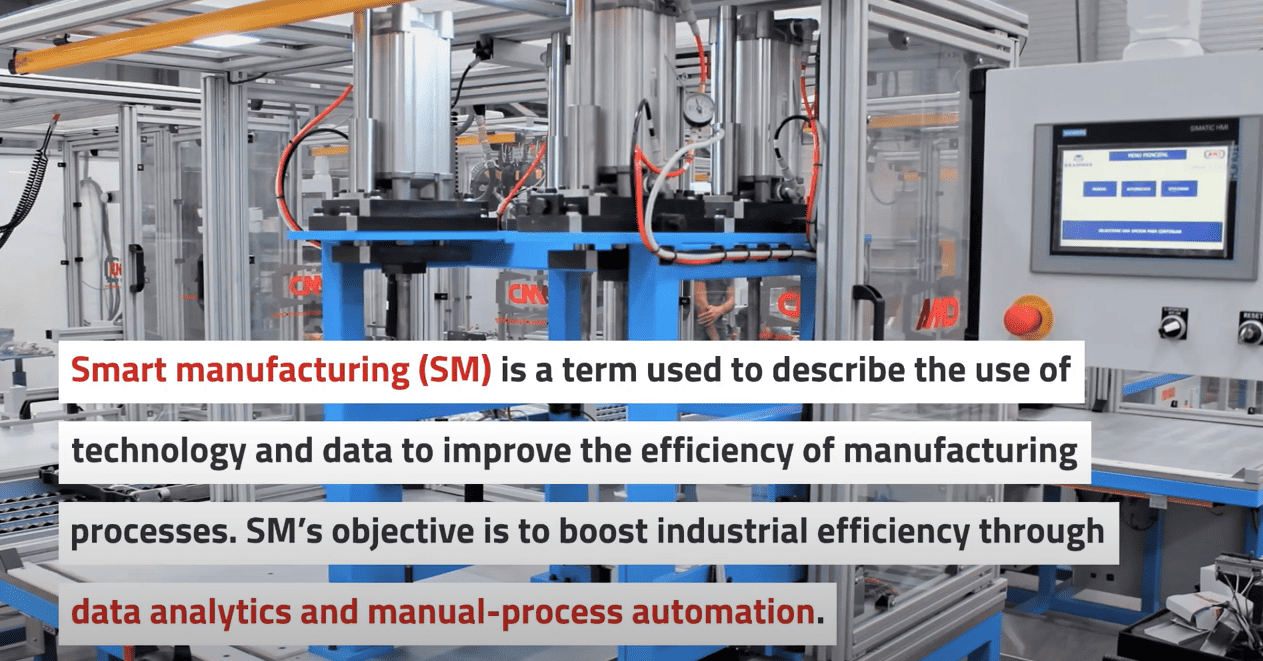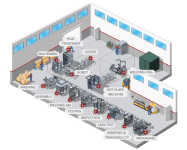Technological advances have enabled the application of automation to many manual processes in various industries. If you’re looking for safe, profitable, and dependable manual assembly equipment, go no further than Advanced Manufacturing Development (AMD).
We can integrate technology into manual machine stations to perform inspections automatically at each level. Integrating tools like vision systems, part presence sensors, mechanical poka yokes, and other approaches into the design can guarantee a high-quality result regardless of the operator’s skill level.
Incorporating Smart Manufacturing Technologies
Smart manufacturing (SM) is a term used to describe the use of technology and data to improve the efficiency of manufacturing processes. SM’s objective is to boost industrial efficiency through data analytics and manual-process automation. It involves using cyber-physical systems, which are connected to the internet and can exchange data with each other. It requires a high degree of integration between different manufacturing processes and systems.
Technology can be integrated into manual equipment in several ways. One way is to use technology to automate the input of data and instructions into the assembly process. For example, by using sensors to capture data about the assembly process and then feed this data into a computer system. Another way to integrate technology is to use it to create a virtual assembly environment. You can do this by using 3D scanning and printing technology to create a replica of the assembly environment.
The Benefits of Adding Smart Sensors to Manual Assembly Processes
There are many benefits to using a manual assembly process over an automated one:
- Manual assembly is more versatile and can be used for a broader range of products.
- It is more flexible, allowing for changes in the design or assembly process with minimal investment in new equipment.
- Manual assembly often requires less capital investment than automated assembly and can be performed with less skilled labor.
- Manual assembly is preferable for prototypes due to the limited volume runs and the potentially unconventional component placements.
There are several scenarios where manual assembly would be the best process. One is when the product is highly customized or when there is a need for a lot of variety in the product. This could be the case, for example, with a furniture company that makes a lot of different styles of chairs. Another scenario where manual assembly would be advantageous is when the product is very delicate and needs to be handled with care, such as with electronic components.
Industries That Could Benefit From Manual Systems With Industrial Smart Sensors
While the use of manual assembly processes may be declining in some industries, many still rely on them to some extent. In some cases, manual assembly is the only option available. Incorporating smart systems can enhance productivity while maintaining the benefits of manual assembly. Different industries require different types of manual assembly processes. Here are some examples:
- Automotive Industry: The automotive industry requires a variety of manual assembly processes, including the assembly of engine parts, body panels, and interior components.
- Electronics Industry: The electronics industry relies heavily on manual assembly processes, particularly for the assembly of printed circuit boards.
- Medical Device Industry: The medical device sector relies on various manual assembly processes, including the assembly of implants and medical devices.
- Aerospace Industry: The aerospace industry utilizes a variety of manual assembly processes, including the assembly of aircraft parts and components.
AMD Machines: Your Smart Manufacturing Partner
Technology has long been applied to manual processes to speed up production or to improve product quality. In recent years, technological advances have led to the development of new methods for applying technology to manual processes. This technology has revolutionized the manual process industry. By automating certain parts of the process and incorporating new technologies, the process has become more efficient and accurate. The application of technology has resulted in increased productivity and cost savings.
At AMD Machines, we’re dedicated to finding cost-effective ways to boost your manufacturing processes’ reliability, uptime, and results. We offer many automated solutions that can save time and improve your productivity. Our products are ideal in various industries, including automotive, electronics, medical devices, and consumer product assembly. AMD has a team of experienced engineers and technicians who can custom-design a solution to meet your specific assembly needs. Contact us or request a quote today for more information.









